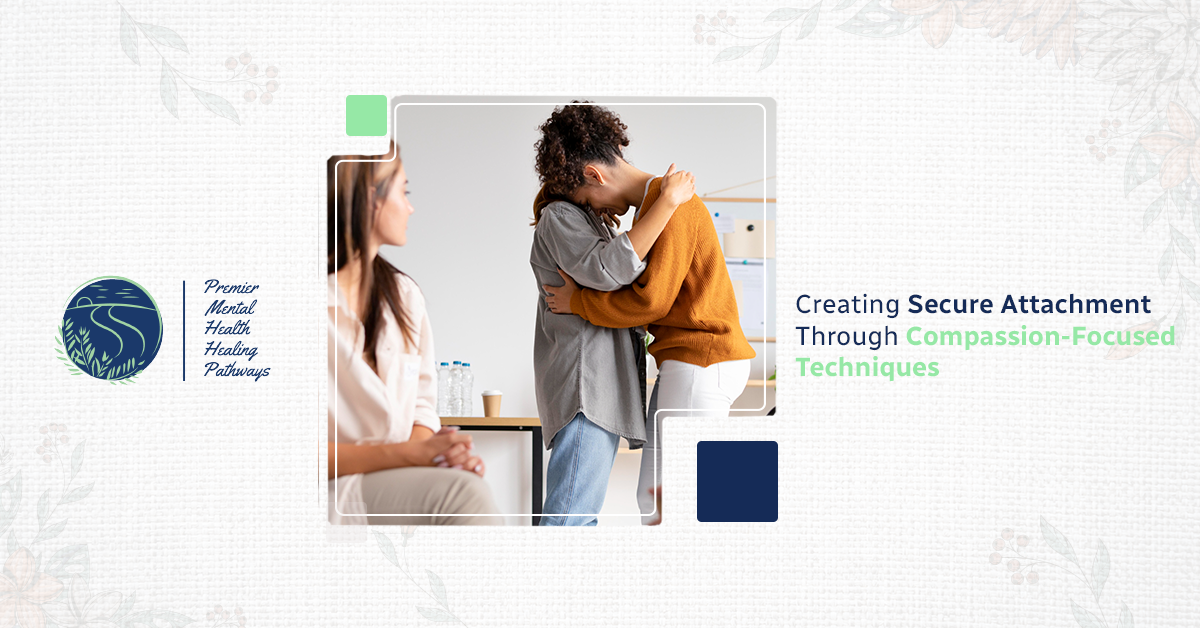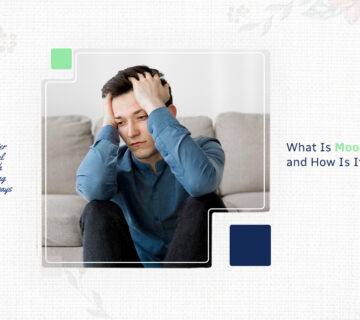Love wasn’t supposed to feel like walking on eggshells.
Obsessively checking the phone and waiting to see when or even if someone would text back.
This wasn’t intuition but rather a nervous system thrown into self-preservation mode.
The hypervigilance that was experienced as the feeling of caring was, in reality, trauma disguised as romance.
The pattern of attachment we develop in childhood forms the model of all subsequent relationships in our lives.
When early caregivers were inconsistent, critical, or emotionally unavailable, our nervous systems learned to brace for impact.
Those patterns of survival still run the show.
But can you change them? Yes.
What CFT Is
Compassion-focused therapy (CFT) was created by the psychologist, Paul Gilbert, to support individuals who experience excessive amounts of shame and self-criticism which, essentially, are the same things that make the idea of secure attachment feel elusive.
How Attachment Trauma Lives in Your Body
Attachment style is not only psychological but physiological too.
It dwells in how we breathe when one appears distant.
In the way shoulders knot up in requesting what you require. In the pit that forms in your stomach when someone says, “We need to talk.”
Such patterns are not shortcomings in the character; they are survival adaptations.
CFT works with three emotional systems that govern how we manage relationships:
- The threat system (always scanning for danger)
- The drive system (pushing us to earn love)
- The soothing system (where we feel safe just as we are)
For most people with insecure attachment, the threat system runs hot while the soothing system stays dormant. CFT teaches your nervous system a different way.
The Three Emotional Systems Behind Every Relationship
Recall the last time when someone you cared about was out of sorts. Perhaps they were not as talkative as usual, or they answered a text later than usual. What occurred in your body?
- Threat system activated: Heart pounding, thoughts running, body getting ready to give up
- Drive system engaged: Trying to work out what you did wrong, what to do to sort it out, what you must do next time to keep them
- Soothing system offline: No access to the part of you that knows you’re worthy of love, regardless
CFT can assist in changing these patterns, and the outcomes are seen in the improvement of the secure attachment style and the decrease of anxious and avoidant behaviors.
The goal is to have access to your soothing system when you need it most.
Specific CFT Techniques That Rewire Attachment Patterns
CFT isn’t about positive thinking or pretending your past didn’t happen. It’s about giving your nervous system new information in the present moment.
The techniques are simple but not easy:
- Compassionate imagery: Learning to connect with a sense of unconditional acceptance—not from another person, but from within yourself. This isn’t visualization; it’s creating an actual felt sense of safety.
- Soothing rhythm breathing: Specific breathing patterns that signal to your nervous system that you’re safe. Your body learns to recognize this signal and respond accordingly.
- Mindful self-compassion: Catching your inner critic before it spirals, creating space between what you feel and what you do about it.
The changes are a bit subtle at first. You might notice you don’t immediately assume the worst when someone seems distant.
You ask for what you need without a pit in your stomach. You can sit with uncertainty without creating stories.
Why Healing Happens Through Self-Relationship
Your attachment patterns were developed in relationships, and they are healed through relationships, beginning with the relationship you have with yourself.
When you can extend yourself the same compassion that you needed as a child, something changes at a very fundamental level.
It is not about invincibility and not feeling insecure. It is about nurturing the ability to calm yourself down when such feelings come.
To remain grounded in the fact that you are worthy in such a situation where the actions of another evoke your fears of abandonment.
Years of experience taught your nervous system to behave in this way. It is understandable why acquiring new ones should be time-consuming and repetitive.
However, each time you express self-compassion rather than self-criticism, each breath that you take mindfully, each time you catch yourself spiraling and come back to center—it all matters.
How Secure Attachment Changes Everything
Secure attachment has nothing to do with finding the perfect person who will never push your buttons.
It is the building of one that can never be broken: a trusting relationship with yourself, that can endure the storms of any and every relationship that may come along.
This becomes a reality when you do not need other people to validate you to tell who you are.
Instead of being perpetually anticipating abandonment, you can be here to experience intimacy.
When you understand how to calm your nervous system, you can remain connected even when things appear hard.
CFT gives you the tools to do this work. Not by bypassing your wounds, but by meeting them with the compassion they—and you—have always deserved.
Get Started Today
Your attachment patterns aren’t your fault, but healing them is your responsibility.
Not because you’re broken and need fixing, but because you deserve to experience love without the constant undercurrent of fear.
Experience relationships from a place of security rather than survival.
Beverly Ann White, Psychiatric Nurse Practitioner, MSN, APN RXN, PMHNPBC, at Premier Mental Health Healing Pathways, specializes in compassion-focused therapy and understands how attachment wounds affect every area of your life.
You don’t have to keep repeating the same patterns.
Contact Premier Mental Health Healing Pathways.
FAQ
How long does it take to change attachment patterns?
There’s no set timeline. Some people notice shifts within weeks, others need months or longer.
Your nervous system has been practicing these patterns for years—be patient with the unlearning process.
Can CFT help if you’ve been in therapy before without much change?
Yes. CFT works with your body and nervous system, not just your thoughts. If you’ve been stuck in patterns despite understanding them intellectually, this approach might be what you need.
What if being compassionate toward yourself feels impossible?
That resistance makes perfect sense—especially if self-criticism has been your protection strategy. CFT starts where you are and builds gradually.






No comment